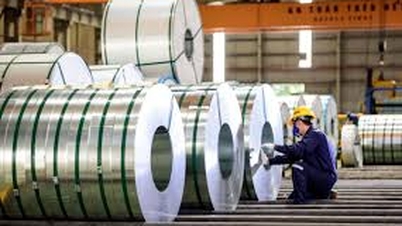To clarify the causes, impacts and solutions to adapt to the situation of high tides exceeding historical levels, reporters of Vinh Long Newspaper, Radio and Television interviewed Associate Professor, Dr. Le Anh Tuan - former Deputy Director of the Institute for Climate Change Research (now Mekong Institute) - Can Tho University about this issue.
|
Associate Professor, Dr. Le Anh Tuan |
- Associate Professor, Dr. Le Anh Tuan: In 2025, the flood level from upstream to Tan Chau station (on Tien River) and Chau Doc (on Hau River) will be higher than 10 years ago but not exceeding the historical flood level of 2000 and 2011. However, when the flood water reaches Can Tho and Vinh Long , it will encounter high tides in October and November 2025, combined with heavy rains in the area, causing the water level to rise, exceeding the level III alarm and flooding many large areas, even quite high. Over the past 10 years, the Mekong Delta has had a tendency to have more small and medium floods, very few high floods, only this year the flood is higher than the average of many previous years, at times exceeding the level III alarm level, but not exceeding the historical flood level.
|
High tides affect people's lives and production. |
- Explaining the cause of this high flood, it should be noted that this year is the year that the La Nina phenomenon has returned to the western Pacific Ocean, so there have been many large storms and tropical depressions, heavy rains and storm surges, a combination of which has made the water level higher. In addition, human activities can make the flood situation worse, such as exploiting groundwater, building excessive structures on weak geological foundations, causing the ground to subside heavily. In addition, some places have built flood dams and tidal sluices, preventing floodwater from entering low-lying areas, and the water will flow to other areas, making the flood situation worse.
In addition, urban flooding is increasing, not only in the Mekong Delta but also in many provinces and cities across the country and many other countries, as a testament to the abnormality of climate change - rising sea levels and extreme natural disasters along with unsustainable human development.
- It is difficult to answer immediately whether the current flood control works, such as the dyke system and tide control sluices, are sufficient to meet the reality, but there must be a truly objective and comprehensive investigation and assessment. Some works only effectively meet flood control needs in normal years, but in special years, their effectiveness is not high.
The results of the assessment of the urban flood prevention problem show that there are shortcomings or mistakes in management, technology and socio-economics, both in terms of environment and public health, then a reasonable solution for the problem can be determined. However, above all, adaptation based on natural ecosystems is still the priority solution because it does not require much investment, is relatively sustainable and can be adjusted to unforeseen changes.
THAO LY (performed)
Source: https://baovinhlong.com.vn/thoi-su/202511/thich-ung-dua-vao-he-sinh-thai-tu-nhien-de-chong-ngap-f370829/







![[Photo] Unique architecture of the deepest metro station in France](https://vphoto.vietnam.vn/thumb/1200x675/vietnam/resource/IMAGE/2025/11/14/1763107592365_ga-sau-nhat-nuoc-phap-duy-1-6403-jpg.webp)

![[Photo] Unique art of painting Tuong masks](https://vphoto.vietnam.vn/thumb/1200x675/vietnam/resource/IMAGE/2025/11/14/1763094089301_ndo_br_1-jpg.webp)





















![[Photo] Special class in Tra Linh](https://vphoto.vietnam.vn/thumb/1200x675/vietnam/resource/IMAGE/2025/11/14/1763078485441_ndo_br_lop-hoc-7-jpg.webp)








































































Comment (0)